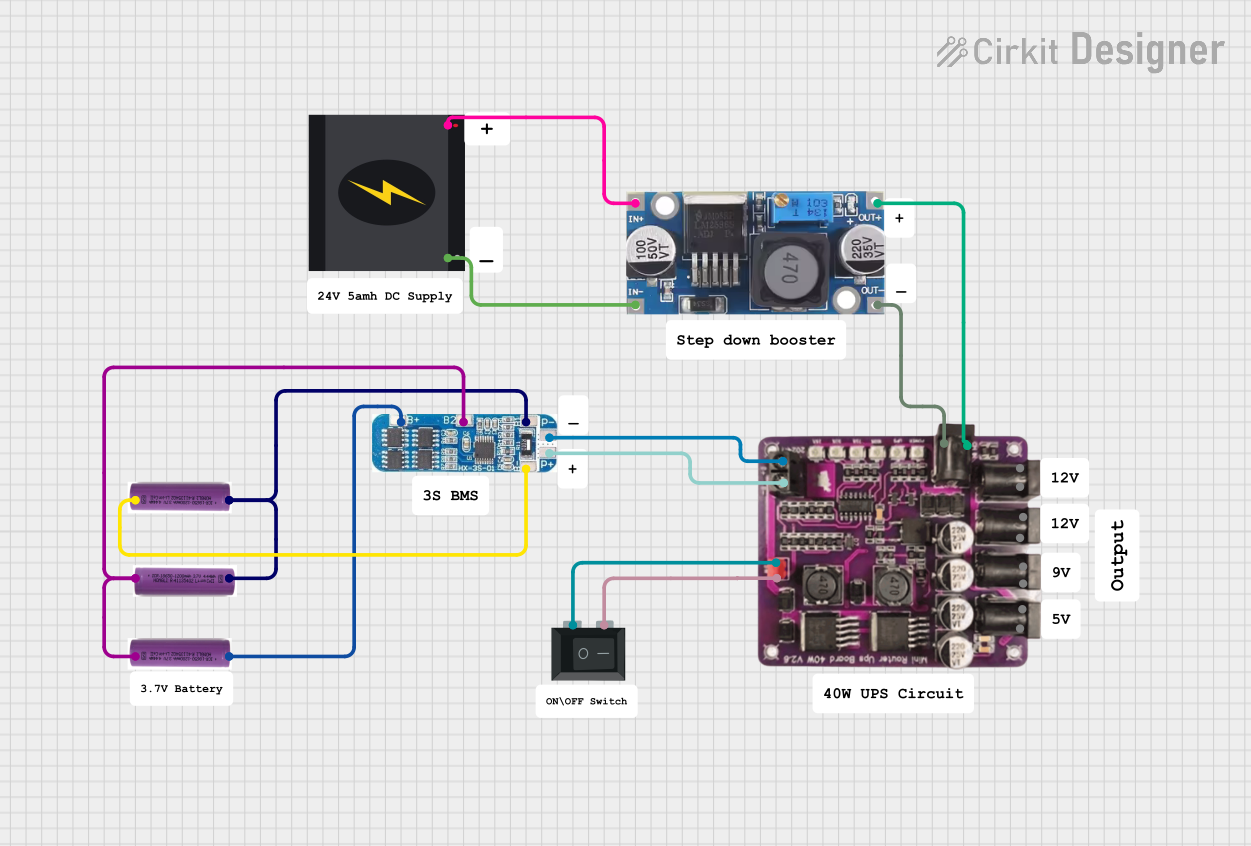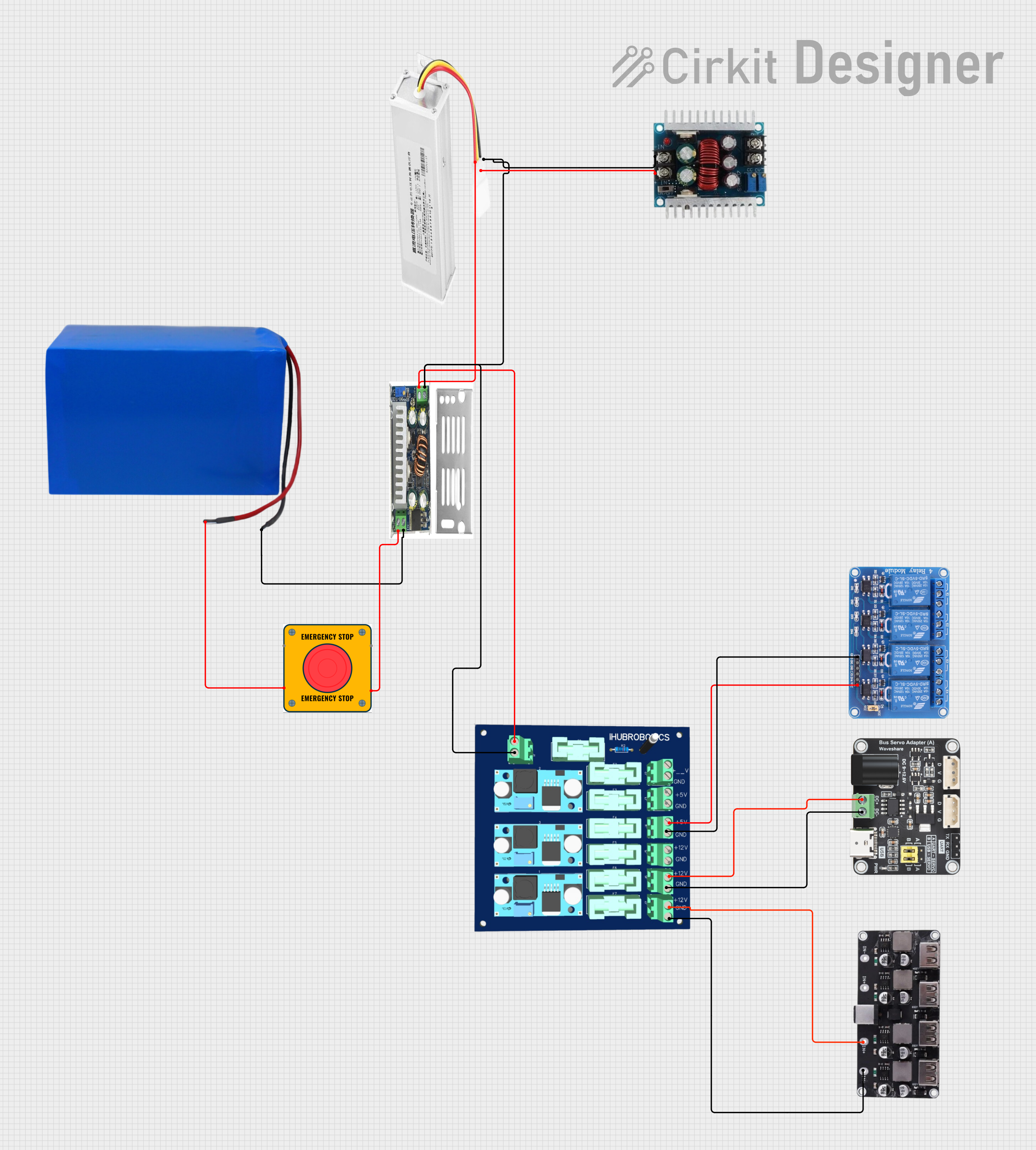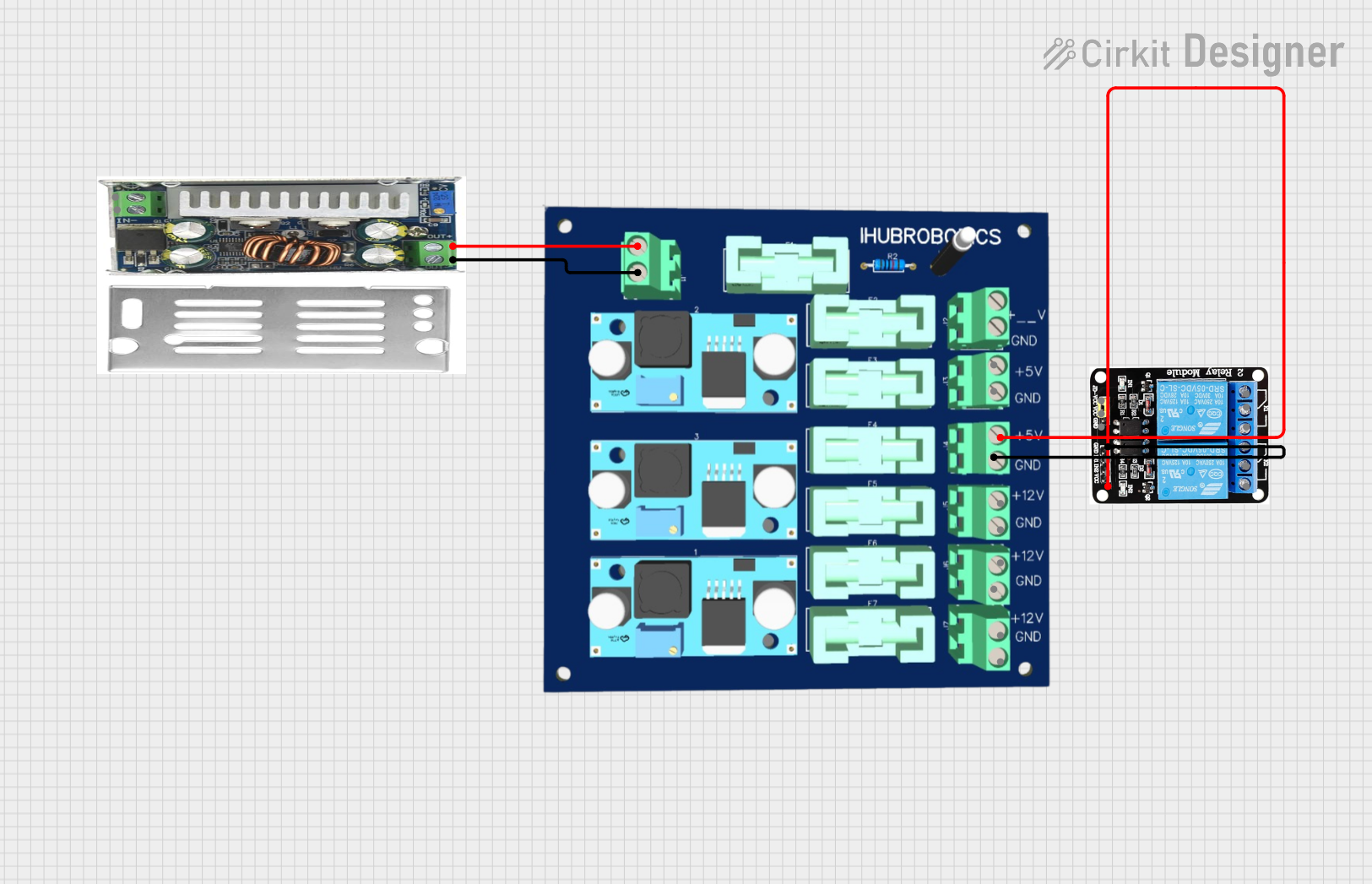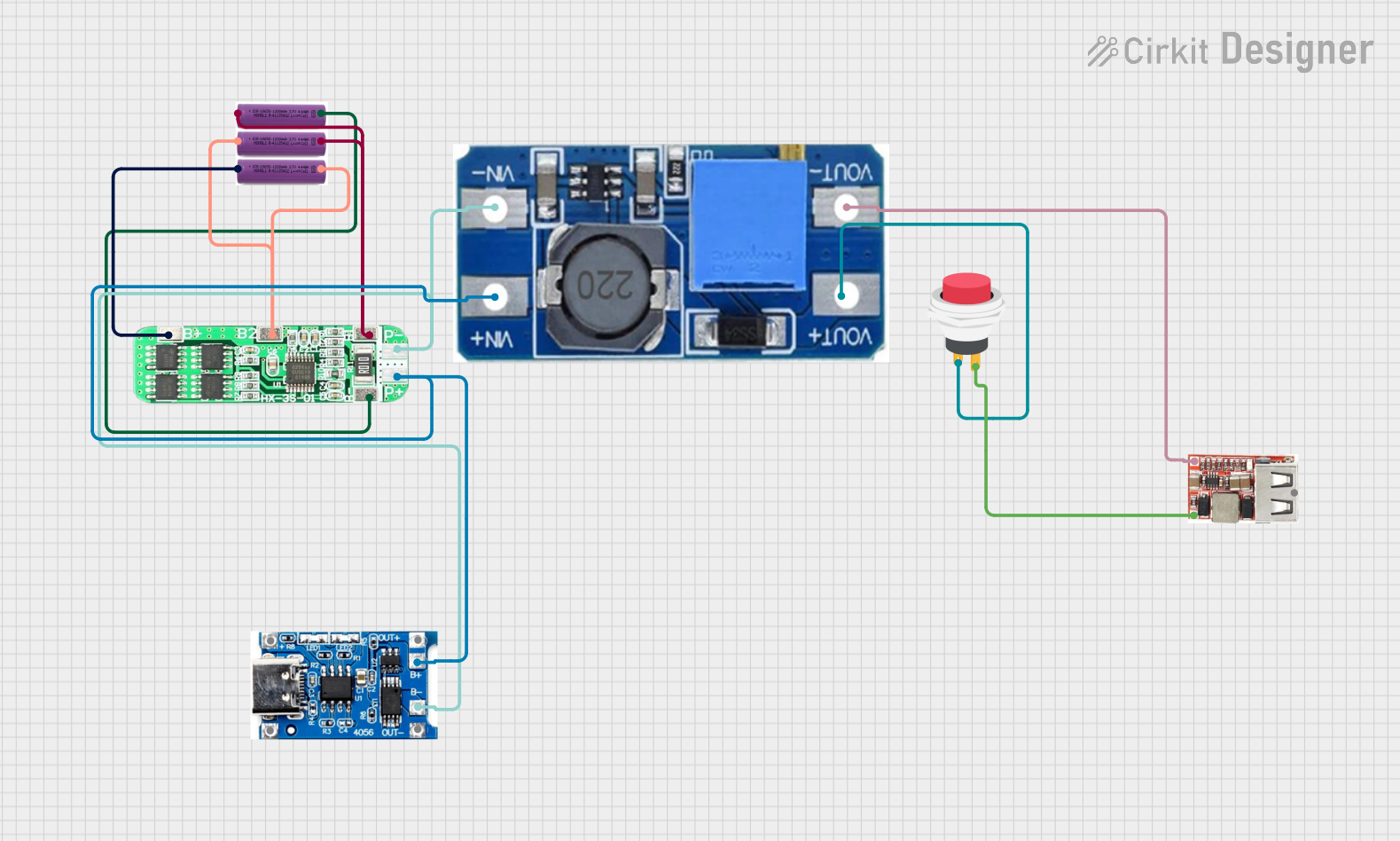
How to Use DC Buck Step-Down Power Module, 3A/24V, MP2315: Examples, Pinouts, and Specs

 Design with DC Buck Step-Down Power Module, 3A/24V, MP2315 in Cirkit Designer
Design with DC Buck Step-Down Power Module, 3A/24V, MP2315 in Cirkit DesignerIntroduction
The DC Buck Step-Down Power Module, MP2315, is a compact and efficient voltage regulator designed to step down a higher DC input voltage to a lower DC output voltage. With a maximum output current of 3A and an input voltage range of up to 24V, this module is ideal for powering low-voltage devices from higher-voltage sources. It is based on the MP2315 chip, manufactured in China, which ensures high efficiency and stable performance.
Explore Projects Built with DC Buck Step-Down Power Module, 3A/24V, MP2315

 Open Project in Cirkit Designer
Open Project in Cirkit Designer
 Open Project in Cirkit Designer
Open Project in Cirkit Designer
 Open Project in Cirkit Designer
Open Project in Cirkit Designer
 Open Project in Cirkit Designer
Open Project in Cirkit DesignerExplore Projects Built with DC Buck Step-Down Power Module, 3A/24V, MP2315

 Open Project in Cirkit Designer
Open Project in Cirkit Designer
 Open Project in Cirkit Designer
Open Project in Cirkit Designer
 Open Project in Cirkit Designer
Open Project in Cirkit Designer
 Open Project in Cirkit Designer
Open Project in Cirkit DesignerCommon Applications and Use Cases
- Powering microcontrollers (e.g., Arduino, ESP32) from higher voltage sources.
- Battery-powered systems requiring regulated voltage outputs.
- LED drivers and low-power lighting systems.
- DIY electronics projects and prototyping.
- Industrial and automotive applications requiring compact DC-DC conversion.
Technical Specifications
Key Technical Details
- Input Voltage Range: 4.5V to 24V DC
- Output Voltage Range: 0.8V to 15V DC (adjustable via potentiometer)
- Maximum Output Current: 3A
- Efficiency: Up to 95% (depending on input/output voltage and load)
- Switching Frequency: 1.5MHz
- Operating Temperature: -40°C to +85°C
- Dimensions: Approximately 22mm x 17mm x 4mm
- Protection Features: Overcurrent protection, thermal shutdown, and short-circuit protection.
Pin Configuration and Descriptions
The module typically has 4 pins or solder pads for connections. The table below describes each pin:
| Pin Name | Description |
|---|---|
| VIN | Input voltage pin. Connect to the positive terminal of the DC input source. |
| GND | Ground pin. Connect to the negative terminal of the DC input source. |
| VOUT | Output voltage pin. Provides the regulated DC output voltage. |
| ADJ | Adjustment pin. Used to set the output voltage via the onboard potentiometer. |
Usage Instructions
How to Use the Component in a Circuit
- Connect the Input Voltage:
- Connect the VIN pin to the positive terminal of your DC power source (e.g., a 12V battery or adapter).
- Connect the GND pin to the negative terminal of the power source.
- Set the Output Voltage:
- Use a small screwdriver to adjust the onboard potentiometer.
- Measure the output voltage at the VOUT pin using a multimeter while adjusting the potentiometer.
- Set the desired output voltage within the range of 0.8V to 15V.
- Connect the Load:
- Connect the VOUT pin to the positive terminal of your load (e.g., a microcontroller or LED).
- Connect the GND pin to the negative terminal of your load.
- Power On:
- Turn on the input power source. The module will regulate the input voltage to the desired output voltage.
Important Considerations and Best Practices
- Ensure the input voltage is within the specified range (4.5V to 24V) to avoid damaging the module.
- Do not exceed the maximum output current of 3A to prevent overheating or triggering overcurrent protection.
- Use a heatsink or ensure proper ventilation if operating at high currents for extended periods.
- Double-check all connections before powering on the module to avoid short circuits.
- If using the module with an Arduino UNO or similar microcontroller, set the output voltage to 5V or 3.3V, depending on the microcontroller's requirements.
Example: Connecting to an Arduino UNO
To power an Arduino UNO using the MP2315 module:
- Set the output voltage of the module to 5V.
- Connect the VOUT pin to the Arduino's 5V pin.
- Connect the GND pin to the Arduino's GND pin.
- Connect the VIN and GND pins of the module to your DC power source (e.g., a 12V adapter).
Sample Arduino Code
Here is an example of using the Arduino UNO with a sensor powered by the MP2315 module:
// Example: Reading a sensor value and printing it to the Serial Monitor
// Ensure the MP2315 module is set to 5V output to power the Arduino and sensor.
const int sensorPin = A0; // Analog pin connected to the sensor
int sensorValue = 0; // Variable to store the sensor reading
void setup() {
Serial.begin(9600); // Initialize serial communication at 9600 baud
}
void loop() {
sensorValue = analogRead(sensorPin); // Read the sensor value
Serial.print("Sensor Value: ");
Serial.println(sensorValue); // Print the sensor value to the Serial Monitor
delay(1000); // Wait for 1 second before the next reading
}
Troubleshooting and FAQs
Common Issues and Solutions
No Output Voltage:
- Cause: Input voltage is not connected or is below 4.5V.
- Solution: Verify the input voltage and connections. Ensure the power source is functioning.
Output Voltage is Incorrect:
- Cause: Potentiometer is not adjusted correctly.
- Solution: Use a multimeter to measure the output voltage and adjust the potentiometer.
Module Overheats:
- Cause: Output current exceeds 3A or insufficient ventilation.
- Solution: Reduce the load current or add a heatsink for better heat dissipation.
Load Device Does Not Power On:
- Cause: Output voltage is not set to the required level.
- Solution: Check the required voltage of the load device and adjust the module accordingly.
FAQs
Q: Can I use this module to charge a battery?
- A: Yes, but ensure the output voltage matches the battery's charging voltage and use a current-limiting circuit if necessary.
Q: What happens if I reverse the input polarity?
- A: The module does not have reverse polarity protection. Reversing the input polarity may damage the module.
Q: Can I use this module with a solar panel?
- A: Yes, as long as the solar panel's output voltage is within the module's input range (4.5V to 24V).
Q: Is the output voltage stable under varying loads?
- A: Yes, the MP2315 module provides stable output voltage with high efficiency, even under varying loads.